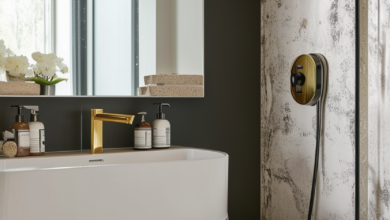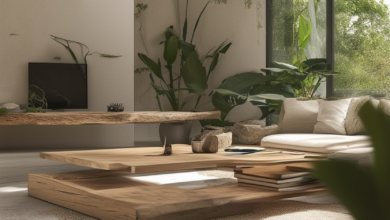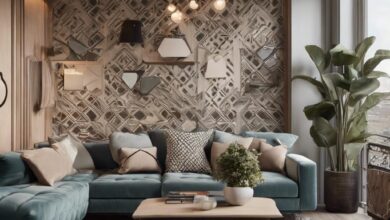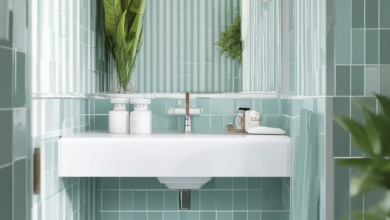Embracing Simplicity: The Art of Minimalist Home Interiors
In a world filled with constant distractions and clutter, many people are turning to minimalist home interiors as a way to bring peace and serenity into their lives. Embracing simplicity in design can have a profound impact on our mental and emotional well-being, allowing us to focus on what truly matters and eliminate the unnecessary. The art of minimalist home interiors is not just about decluttering and organizing, but about creating a space that is tranquil, functional, and visually stunning.
Minimalist home interiors are characterized by clean lines, neutral colors, and a sense of openness and lightness. By focusing on quality over quantity, minimalist design allows for a sense of calm and tranquility to permeate throughout the home. From meticulously curated furniture to carefully selected decor, every element in a minimalist home serves a purpose and contributes to the overall aesthetic. Embracing simplicity in home interiors is not about sacrificing comfort or style, but rather about creating a space that is free from distractions and unnecessary complications.
Creating a Tranquil Environment: Key Elements of Minimalist Home Interiors
When it comes to creating a tranquil environment in your home, embracing simplicity is key. Minimalist home interiors are all about stripping away the excess and focusing on the essentials. By incorporating clean lines, neutral colors, and uncluttered spaces, you can achieve a sense of calm and serenity in your living space.
One of the key elements of minimalist home interiors is decluttering. Clearing out unnecessary items and only keeping what is truly essential can help create a sense of tranquility in your home. Minimalist furniture is another important aspect of achieving a minimalist look. Opt for pieces that are sleek, simple, and functional, avoiding any unnecessary ornamentation.
Lighting also plays a crucial role in creating a tranquil environment. Natural light is ideal for minimalist interiors, so make sure to keep windows unobstructed and use sheer curtains to let in as much light as possible. When it comes to artificial lighting, opt for soft, ambient lighting that creates a warm and inviting atmosphere.
Simplicity at its Finest: Tips for Achieving a Minimalist Home Interior
When it comes to creating a minimalist home interior, less is always more. Embracing simplicity in your living space can help create a sense of calm and tranquility, making your home a relaxing sanctuary away from the chaos of everyday life. By following a few key tips, you can achieve a minimalist design that is both stylish and functional.
One of the first steps in achieving a minimalist home interior is to declutter your space. Get rid of any unnecessary items that are cluttering up your living area, and only keep the essentials. This will help create a clean and streamlined look that is characteristic of minimalist design. Consider donating or selling items that you no longer need, and only display items that hold sentimental value or serve a practical purpose.
Another important aspect of minimalist home interiors is choosing a neutral color palette. Opt for whites, greys, and earth tones to create a cohesive and calming environment. By keeping your color scheme simple, you can create a sense of unity throughout your space. Additionally, focus on incorporating natural materials such as wood and stone to add warmth and texture to your minimalist design.
Embracing Minimalism: Decluttering Your Space for a Minimalist Home Interior
When it comes to creating a minimalist home interior, less is always more. Embracing simplicity in your space can not only make it look more visually appealing but also help create a sense of calm and tranquility. One of the key principles of minimalist design is decluttering, which involves getting rid of unnecessary items and only keeping the essentials.
Start by assessing your current space and identifying areas that are cluttered or overly crowded. Consider what items are essential and what can be removed to create a more streamlined look. Utilize storage solutions such as bins, baskets, and shelving to help keep items organized and out of sight.
Another important aspect of minimalist home interiors is choosing a neutral color palette. White, beige, grey, and other soft tones can help create a sense of openness and lightness in a room. Incorporate natural elements such as wood, stone, and plants to add warmth and texture to your space.
Minimalist Home Decor: Choosing the Right Pieces to Enhance Your Interior
When it comes to creating a minimalistic home interior, less is always more. The key to achieving a sleek and stylish look is to carefully select the right pieces that enhance the overall aesthetic of your space. By focusing on clean lines, neutral colors, and simple yet functional furniture, you can create a sense of calm and serenity in your home.
One of the main principles of minimalist home decor is to prioritize quality over quantity. Instead of filling your space with unnecessary clutter, opt for a few statement pieces that will stand out and make a statement. Choose items that serve a dual purpose, such as a coffee table with built-in storage or a sleek sofa with hidden compartments.
Another important aspect of minimalist design is to pay attention to the materials and textures used in your decor. Incorporating natural elements like wood, stone, and metal can add warmth and depth to your space. Consider mixing and matching different textures to create visual interest, such as pairing a smooth leather armchair with a plush wool rug.



